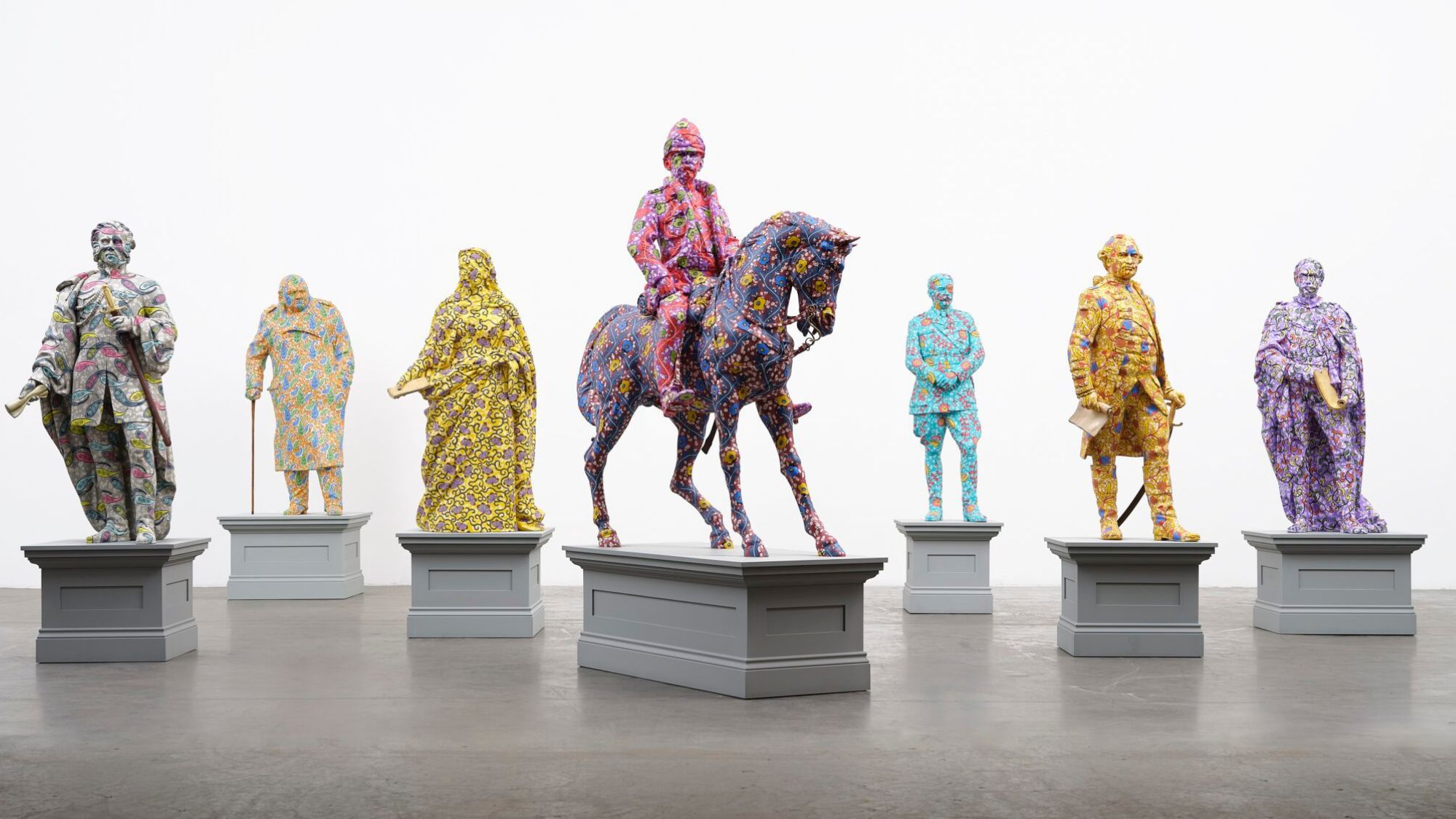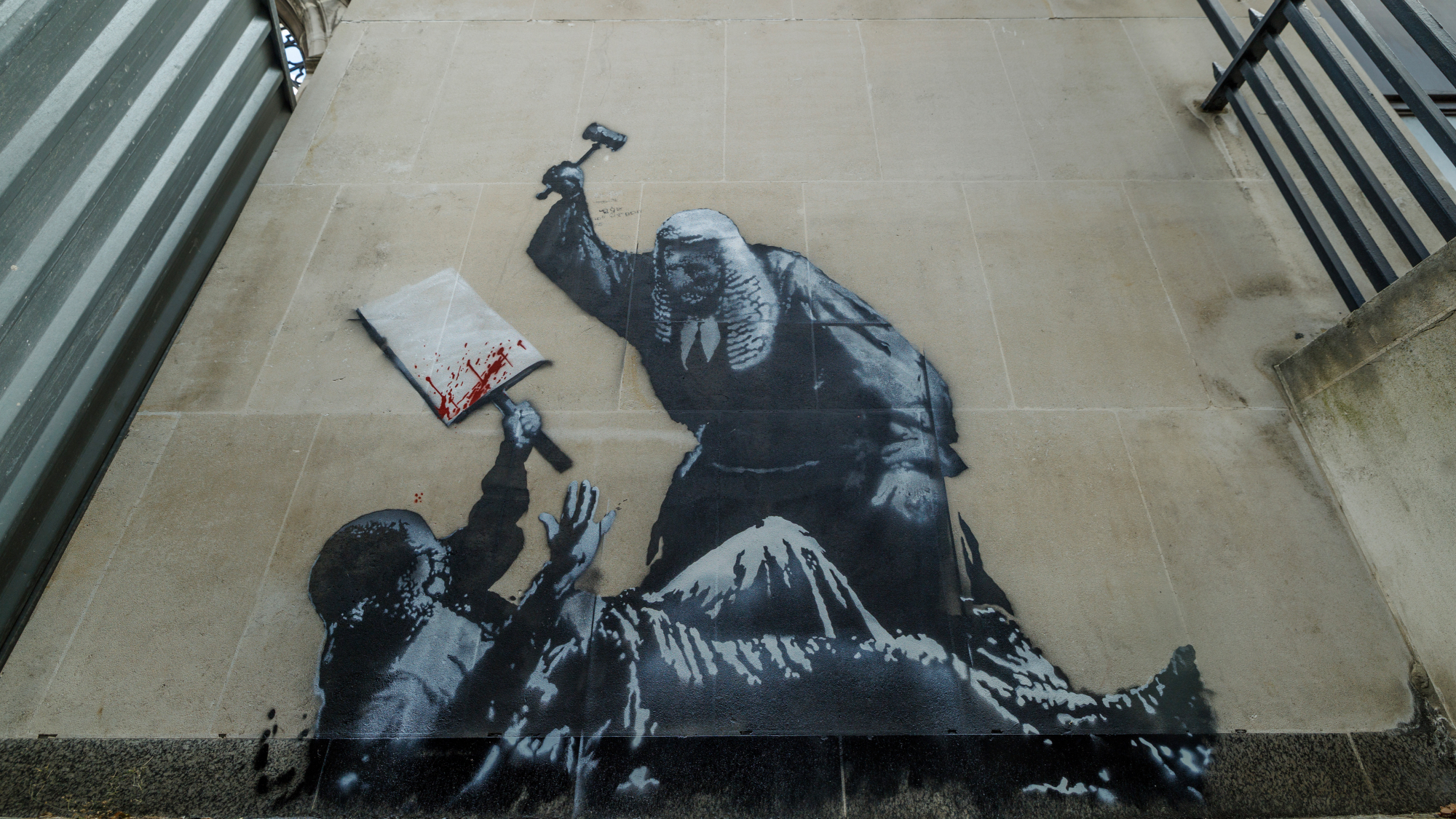Yinka Shonibare CBE: Suspended States – a 'stunning' show
Serpentine Gallery exhibition touches upon slavery, colonialism and global warming

In the 1990s, the British-Nigerian artist Yinka Shonibare had an "epiphany", said Ben Luke in the Evening Standard. He discovered that the colourful batik fabrics sold in Brixton Market, which he had always associated with West Africa, were in fact the product of complicated historical exchanges. They were based on Indonesian textiles shipped to Europe and thence "industrially produced" in Holland: they only arrived in Africa through colonial commerce.
Ever since, he has used this material to create work that explores the complexities of imperial history, and to question notions of "cultural authenticity". He has wrapped effigies of figures from British history in batik, and used the fabric to create "wind sculptures" – sails which evoke the principal motor of the slave trade. His trick, however, is to make it all look bright and joyous.
This new show at the Serpentine brings together a number of recent installations and sculptures, all using his "signature fabric". It touches on everything from slavery and colonialism to global warming and the refugee crisis.
The Week
Escape your echo chamber. Get the facts behind the news, plus analysis from multiple perspectives.

Sign up for The Week's Free Newsletters
From our morning news briefing to a weekly Good News Newsletter, get the best of The Week delivered directly to your inbox.
From our morning news briefing to a weekly Good News Newsletter, get the best of The Week delivered directly to your inbox.
It's "classic Yinka" – a show marrying "immediate visual allure" to "disquieting meaning". Shonibare's work is always "beautifully distinct", said Laura Cumming in The Observer. Even if he hasn't literally made these pieces himself (he has been disabled since adolescence), they are unmistakably his creations. It's a blessing and a curse, however. A work entitled "The War Library" sees 5,000-plus volumes on conflicts past and present bound in Shonibare's trademark textiles and exhibited in a huge bookshelf. "Stunning" as it is, he has made very similar pieces before. And it works in terms of rather obvious generalisations: the artist is "against colonialism, racism, imperialism, war". Elsewhere, he has made fibreglass copies of statues depicting figures from British imperial history, including Queen Victoria and Churchill, in his "gorgeously recognisable" batik patterns – again, a tactic he has deployed before. You're left feeling that he has been doing exactly the same thing for 30 years, and that "nothing – and I mean nothing – has changed".
Perhaps that's because it's still so relevant, said Jonathan Jones in The Guardian. By turning "patriotic statues" into objects that would be unimaginable to the people they commemorate, he has created "a witty, weirdly beautiful conclusion" to the furious debate around public sculpture that has raged since 2020. The conclusion to the show, "Sanctuary City", is especially "moving". Scale models of Aleppo Cathedral, the UN headquarters and the Bibby Stockholm barge, among others, are lit from within to reveal interiors patterned with his trademark fabrics. All these sanctuaries are at best ambiguous symbols – yet they "glow with the idea of protecting vulnerable people". We should be thankful for Shonibare – a gentle artist who "encourages us to think a bit".
Serpentine South Galley, London W2 (020-7402 6075 ). Until 1 September
A free daily email with the biggest news stories of the day – and the best features from TheWeek.com
-
 The best food books of 2025
The best food books of 2025The Week Recommends From mouthwatering recipes to insightful essays, these colourful books will both inspire and entertain
-
 Art that made the news in 2025
Art that made the news in 2025The Explainer From a short-lived Banksy mural to an Egyptian statue dating back three millennia
-
 Nine best TV shows of the year
Nine best TV shows of the yearThe Week Recommends From Adolescence to Amandaland
-
 Winter holidays in the snow and sun
Winter holidays in the snow and sunThe Week Recommends Escape the dark, cold days with the perfect getaway
-
 Let these comedians help you laugh your way through winter
Let these comedians help you laugh your way through winterThe Week Recommends Get some laughs from Nate Bargatze, Josh Johnson and more
-
 The best homes of the year
The best homes of the yearFeature Featuring a former helicopter engine repair workshop in Washington, D.C. and high-rise living in San Francisco
-
 Critics’ choice: The year’s top 10 movies
Critics’ choice: The year’s top 10 moviesFeature ‘One Battle After Another’ and ‘It Was Just an Accident’ stand out
-
 A luxury walking tour in Western Australia
A luxury walking tour in Western AustraliaThe Week Recommends Walk through an ‘ancient forest’ and listen to the ‘gentle hushing’ of the upper canopy


